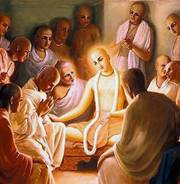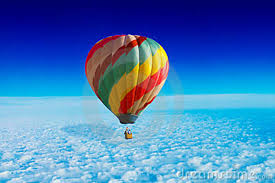Spiritual seekers (sadhaks) are brothers and sisters in arms in the battle of life. They come together in satsang (spiritual company), and their very company acts as an invisible buffer against the downward forces that drown the masses. Any time there is a gathering of sadhaks, have no doubt that they are joined by the unseen ascended Yogis.  Even when one practices in solitude, they are also present unseen to guide and encourage the seeker – there is no doubt about this. They are aware of the difficulties of navigating out of this world and bestow their grace and blessings.
Even when one practices in solitude, they are also present unseen to guide and encourage the seeker – there is no doubt about this. They are aware of the difficulties of navigating out of this world and bestow their grace and blessings.
Time is Short
How many more days we will have left to practice? Death often comes with no warning at all.
” Any person can expire at any time.”
Parahmahamsa Hariharananda
The yogi is the brave hero who chooses to face this now rather than later. When through his deepening experience of the bodiless state he reaches, via spiritual practice, the state in which he is dead while living (jivanmukta), then when the time comes for the body to drop away, it is like nothing at all – for he has already come to perceive himself as Spirit.
And fear is one of the main reasons why we do not take to the spiritual path in the first place – we are afraid to transcend the mortal coil in meditation. We are like the bird who has become so accustomed to its cage that he is hesitant to fly free even when the door has been opened.
Yet fear is not the only restraint that restricts us from our flight – our attachments and desires are also a great weight…
Lightening Our Load
How does the hot air balloon ascend in flight? It begins with so many sand bags, but in order to go higher, it must begin to release more and more bags. The more bags are released, the higher it is able to ascend. So it is with our desires and attachments which serve as the weight that keeps us earthbound. If we destroy them, realizing that they only result in pain, then we lighten our load, so to speak.
In the same way that one who sees clearly will not chase after a desert mirage, knowing it to be unreal, the wise sage does not chase after worldly objects.
“O Raghava, abandon all desires inwardly, be free from attachments and latent impressions, do everything outwardly and thus play your part in the world.”
“O Raghava, adopt a comprehensive view, characterised by the abandonment of all objects of contemplation, live in your innate Self, liberated even while alive (jivan-mukta), and thus play your part in the world.”
“Eliminate one concept by another and the mind by the mind and abide in the Self. Is this so difficult, O holy man?”
-Vasistha (Vasistha Sara, 7:2, 3, 10)
But how do we rid ourselves of the weight of our attachments when they are so strong?
Sages such as Vasistha instructed that viveka and vairagya (discrimination and dispassion) are the means. Discrimination is keeping the mind focused on the truth that the Self alone is real – all else is fleeting, transistory, a passing dream.
Vairagya will also result if we remain fixed on the above contemplation, and if we duly reflect on the short-lived nature of sense pleasures. If the mind stubbornly remains filled with thoughts of the world, it will continue to appear as a solid reality and Self-realization will not dawn…
“Why do people not visualize the atma? (perceive the Self) It is because the mind of the being is so pre-occupied with its false images that it is busy in collecting them. If he mangages to get them, he is overjoyed, but if he is unsuccessful in his efforts then he gets heart-broken. Whatever the case may be, the truth is, that it is not the truth, but, alas! at that time the capability of understanding the reality is not there. Therefore the mind keeps swinging from branch to branch or happiness to unhappiness and the being cannot get peace unless he rids himself of his illusive imaginations.”
Spiritual Gita Bhupendranath Sanyal
XIII, 10
There is no unmixed happiness in life, yet the mind vainly and stubbornly ignores this fact, holding out hope that it is possible. Duality is part and parcel of relative existence. The only way to permanent happiness is Self-realization (the “Kingdom of Heaven” referred to in the Bible). Until then, happiness and unhappiness, pleasure and pain, etc. will continue changing hands – and this continuing oscillation is in itself suffering. Yet when the joy of the Self is reached one becomes like Sri Ramakrishna Paramahamsa’s sailor who, after much toil and effort, is at last successful in erecting the mast and can sit back, light a smoke, and enjoy the ride. He continues to function in the world and to others looks like a normal man, but they cannot comprehend his divine Joy…
“These saints of the paravastha – after their achievement of the same are not totally cut out from worldly acts, but since they have subjugated all worldly desires, nature cannot bring them down from their high post. They are out of this world in the paravastha or advanced stage or kriya, where rajoguna or tamoguna cannot even approach them.”
Spiritual Gita Bhupendranath Sanyal
XIV, 22
Body is a Sinking Ship
The sages and saints who have found the life vest of God have taught this truth in many ways through the ages, all expressing the same fact – God is the only constant, and all else is but a passing dream. This is why the wise sadhaks, the spiritual seekers of clear vision, toil and labor for God alone. The financial investor works extremely hard, seeking to build capital, as if material wealth, even if he is able to get it, will grant him eternal life. Yet if, owing to his prarabdha karma, ill health or death is his destiny at a given time, no amount of wealth will be of any use. Remember the words of Lord Christ – “For what shall it profit a man if he shall gain the whole world, and lose his own soul?” (Mark 8:36) Also, Sri Shankara wrote that life is ever as unstable “as a water droplet on a leaf.” We should keep this ever in mind and know that true wealth lies with God alone. We should fight on with faith and courage. The true yogi must be a warrior. It is not by accident that the setting of the Bhagavad Gita is a battlefield.
Despite life’s uncertainty and instability the yogi, knowing the Self to be indestructible, should have no fear:
“Without the sea there are no waves. Without waves, the sea still exists. When the wave of an individual body and personality perishes, the soul remains. The soul is immortal; the wise do not lament for the dead. Seek your immortality.”
The Bhagavad Gita in the Light of Kriya Yoga, II:12 Paramahamsa Hariharananda
Please Lord, lift up, protect, and guide all seekers of Truth. Watch over us and guide us in our journey. Enable us, through your grace, to emerge victorious in the battle of life.
OM












